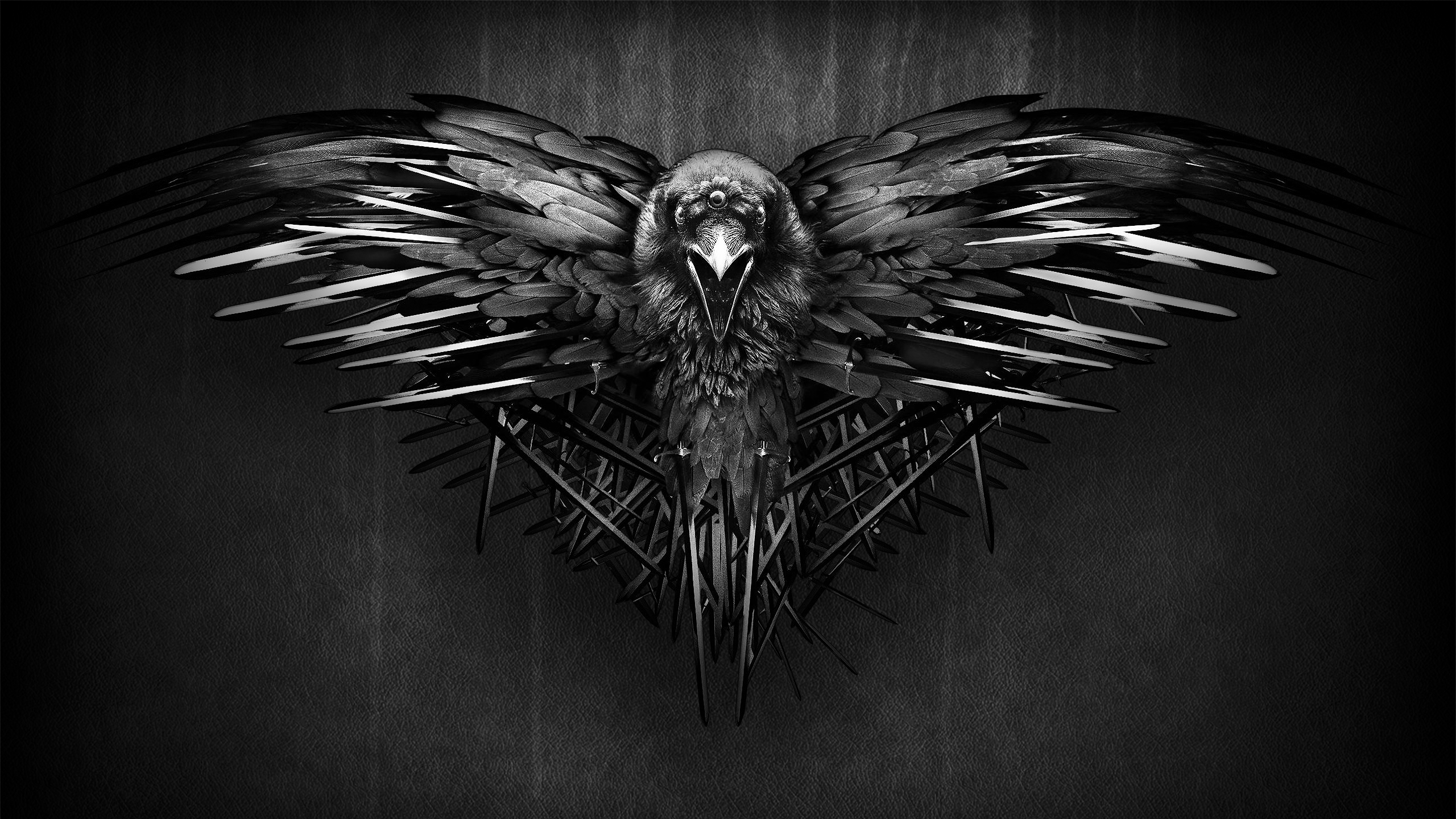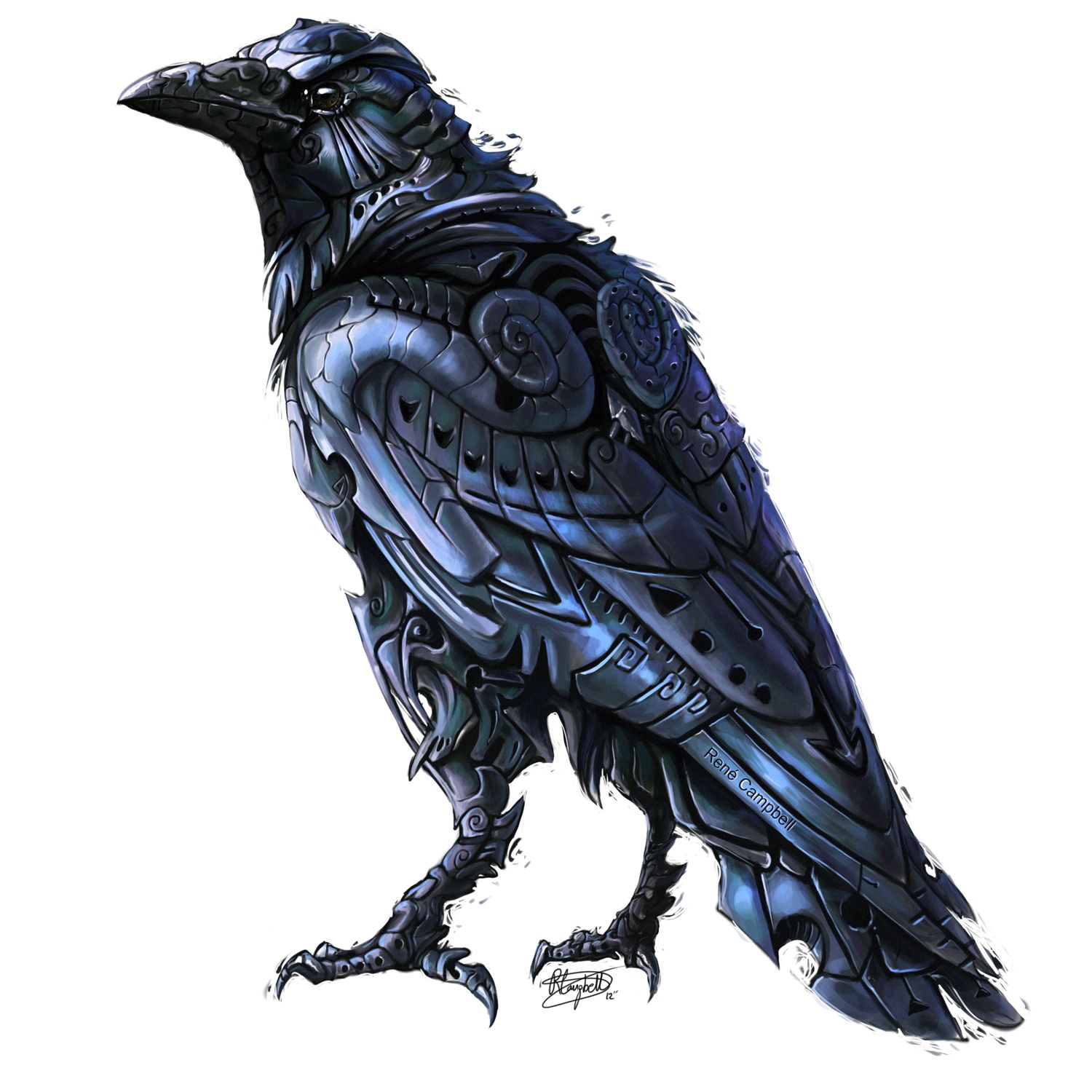Mythic Origins

They called him by many names: Glad-of-War, the Gallows God, Old One-Eye, but his common name was Odin. Odin had two Ravens, Huginn and Muninn, which would depart Asgard every day and fly around the world in order to bring back the news and tales of events occurring in the realm that day. As gratitude for this service, the god granted his Ravens a unique gift - the ability to take on the shape of men, to think and speak like men do.
Unfortunately, he didn’t do anything to remove their fascination with shiny things, and the now-expanded Ravens had learned to talk, a thing which they never really ever got out of their system and which they continue to do to this very day. Their chatter eventually drove Odin to distraction, so he banished Huginn and Muninn, and took on two new Ravens that he did not bestow any gifts upon.
Afterwards the now-unemployed Ravens decided they’d have to find something new to do. Since information was an area at which they excelled, they decided to stick with what they knew.
Leadership & Social Structure

The Ravens descended from Huginn and Muninn each tried a number of different names for their kin including nest, conspiracy, an unkindness, and a cult. They even tried borrowing from their poor cousins the crows and tried being a murder. As a result of these many different attempts, the name for a group of wereravens is rather flexible and largely dependent on the group’s leadership. Most prefer "Conspiracy" since it gives them a cagey, edgy kind of feel.
The Leaders of a raven conspiracy are always male and female, and always bear the title of Huginn (male) and Muninn (female). This tradition has not changed since the original Ravens bearing those names and the very first nest. The two leaders of the Conspiracy are always a mated pair, but not necessarily married or monogamous. The fertility of the mated pair is guaranteed, but with any other partner they are sterile. When a Huginn or Muninn dies or relinquishes their position, the social Ravens debate and then select and elect the worthiest candidate to fill the open position.
The Huginn and Muninn appoint individuals into four key roles who assist the leaders in their governance tasks:
- Draoidh ("Druid") - The tale and law keeper of the Conspiracy to whom is given power to rule when the Huginn and Muninn are unavailable, absent, or dead. The Draoidh is responsible for maintaining the Conspiracy’s stories, the life and death songs of its members, and arbitrates disputes between members. They are further entrusted with assisting the Conspiracy elect new leaders and investing those chosen leaders with their powers and reminding them of their duties.
- Thane(s) - The military arm of a Conspiracy, charged with protecting the shared space the Conspiracy meets or lives at, as well as guarding the Conspiracy from threats within and without. Most nests have a single Thane, but it is not uncommon in times of strife and turmoil for there to be more.
- Morrigan - Perhaps the darkest member of any Conspiracy, as by virtue of their calling they serve as an intelligence officer, as well as an assassin. If the Thanes are the visible force which safeguards the Conspiracy, the Morrigan is the unseen presence which removes threats that must be removed, and the silent threat held over Conspiracy members who do not adhere to the decisions of the leaders.
- Vitki (Vitkar, plural) - Fills the role of advisor, mystic, and sage. The Vitki does not always have to be a Raven and can be adopted by members of the Conspiracy if the Huginn and Muninn approve of the arrangement. The Vitki’s job is to provide magical power and assistance, and to help the other leaders within the Conspiracy protect, guard, and guide the group.
Life Cycle
The Ravens are not like other lycanthropes in that while their illness can be transmitted just as any other strain of lycanthropy can be, their primary method of reproduction is in the hatching of eggs. Most wereravens come into the world as actual Ravens, and it is only around 7 or 8 months after they have achieved flight and left the nest that they come into the power to take on human form. They emerge from this young avian state as an adult human, their minds undergoing rapid expansion and improvement to become more human-like.
General Traits & Abilities

Like their natural counterparts, Ravens tend to be clever, having a knack for puzzles and information. Their abilities to mask their true appearance, mimic voices, and interact with the dead allows them to learn things that others would find difficult if not impossible.
This secret-fetching combined with their pitch coloring uphold the mysteries that tout Ravens as wicked souls and messengers of the dark. Ravens tend to be tricksters with warped senses of humor, such as taunting or mocking other creatures simply because they think it's funny. On the whole, Ravens are expressive, hold empathy for their friends and grudges for their enemies equally, and enjoy entertainment for the sake of entertainment itself.